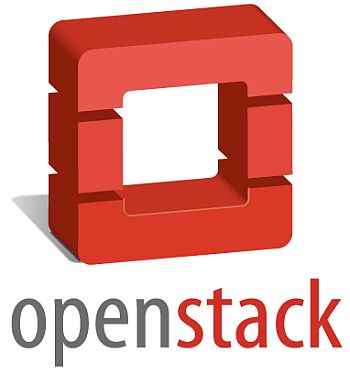OpenStack Releases ‘Essex’ Cloud OS

OpenStack’s fifth-generation ‘Essex’ release adds pluggability to the open source cloud operating system
OpenStack has announced “Essex”, the fifth version of its community-driven, open-source cloud operating system, with a focus on quality, usability and extensibility across enterprise, service provider and high-performance computing (HPC) deployments.
The OpenStack Essex news comes just days after Citrix announced its plans for the next version of its CloudStack cloud platform, which the company submitted to the Apache Software Foundation (ASF) and itself became a sponsor of ASF.
OpenStack backing
Speaking of sponsorships, GigaOm reported that IBM and Red Hat are poised to lend their substantial might behind the OpenStack open-source cloud project at the upcoming OpenStack Spring 2012 conference.
 OpenStack Essex enables users to leverage pools of on-demand, self-managed compute, storage and networking resources to build efficient, automated private and public cloud infrastructures.
OpenStack Essex enables users to leverage pools of on-demand, self-managed compute, storage and networking resources to build efficient, automated private and public cloud infrastructures.
Moreover, illustrating the power of community-driven software development, the Essex release was written by over 200 developers from 55 different companies. Essex delivers user-requested features for improved automation, integration across projects, and central management and provisioning by leveraging OpenStack’s pluggable architecture.
The Essex development cycle included an earlier feature freeze and an extensive testing phase before release, resulting in greater stability and reliability, and Essex will also be included in the next Ubuntu 12.04 long-term support release.
There have been more than 100,000 downloads from openstack.org, with production cloud environments deployed around the globe. Essex adds new features and better project integration across the three pillars of compute, storage and networking.
Essex also marks the first full release of two new projects, Dashboard and Identity, which provide additional infrastructure and support across the three pillars. With a focus on quality, usability and extensibility across the projects, Essex adds about 150 new features.
‘Nova’
Among the new updates to the system is the new OpenStack Compute feature, code-named Nova, which, along with the new Dashboard and Identity features, focuses on stability and integration. It includes enhancements to feature parity among the Tier 1 hypervisors – making it a seamless user experience across each hypervisor – improved authorisation and live migration with multihost networking.
There were also contributions to support high-performance computing and additional block storage options, including support for Nexenta, SolidFire and NetApp storage solutions.
The new OpenStack Object Storage feature, code-named Swift, delivers new capabilities to improve compliance and data security with the ability to expire objects according to document retention policies, more protections against corruption and degradation of data, and sophisticated disaster recovery improvements.
There are also new capabilities important to service providers, including the ability to upload data directly from an authenticated web page and the ability to restrict the maximum number of containers per account.
The new OpenStack Dashboard, code-named Horizon, is the first full release of OpenStack Dashboard. It provides administrators and users with the ability to access, provision and automate cloud-based resources through a self-service portal. The extensible design makes it easy to plug in and expose third-party products and services, such as monitoring.
OpenStack Identity
Right alongside it is the new OpenStack Identity, code-named Keystone, which is the first full release of OpenStack Identity, and it unifies all core projects of the cloud operating system with a common authentication system. The technology provides authorisation for multiple log-in credentials, including username/password, token-based and Amazon Web Services (AWS) style log-ins.
Rounding out the major new and enhanced features is OpenStack Image Service, code-named Glance, which gains several key updates to improve usability, authorisation and image protection.
“The Essex release represents an exciting time for both OpenStack users and for NetApp as it marks a significant step forward in the flexibility of the platform and our first contribution to the community,” said Jeff O’Neal, senior director of the Solutions Integration Group at NetApp, in a statement. “With NetApp technology integrated into OpenStack Compute, users will be able to build on a storage platform that delivers a unique array of storage efficiency technologies, data replication features, fault tolerance, and high availability to help reduce costs and enable users to get the most out of their private and public cloud architectures. We’re thrilled to take part in the OpenStack maturation process and help build a wave of production deployments combining OpenStack and NetApp.”
OpenStack is looking beyond Essex. For instance, Project Quantum, led by Nicira, Cisco, Citrix, Midokura and Rackspace, was incubated during the Essex release and aims to provide an automated framework for managing data centre network activities.
Quantum service
Quantum is a plug-in-based service that manages common network administrative tasks, from creating ports and routes to configuring VLANs. Many users have been deploying OpenStack clouds with the Quantum networking service during the incubation phase, and Quantum is expected to become a core part of OpenStack in the “Folsom” release expected fall 2012.
The spring 2012 OpenStack Design Summit & Conference is taking place from 16 to 20 April at the Hyatt Regency San Francisco. The Design Summit will bring together more than 400 OpenStack developers and key contributors to determine the roadmap for the “Folsom” release.
Conference keynote presentations will be given by HP, Canonical, Nebula and Rackspace, and the event will feature presentations from OpenStack users, including Deutsche Telekom, San Diego Supercomputer Centre, eBay’s X.commerce, Department of Energy Magellan and NeCTAR.
Are you an expert on social networks? Take our quiz.